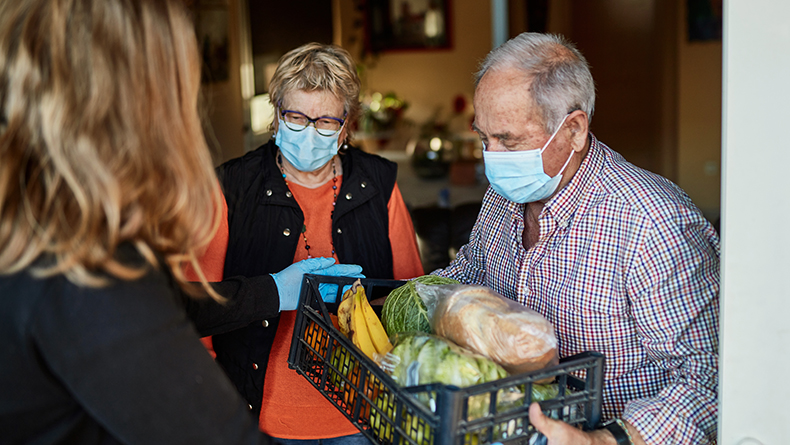AARP Eye Center
New Journal Article Highlights Impact of COVID-19 on HCBS
By Susan Reinhard, Brendan Flinn, Carrie Amero, May 5, 2022 09:55 AM

The COVID-19 pandemic had stark and immediate effects on home and community-based services (HCBS) and the people who received these supports. In a new article in Generations, we examine the implications of the pandemic on people receiving HCBS, and on the HCBS system itself.
In the early months of 2020, HCBS became less available as states and localities began to close community resources (e.g., adult day services) and in some cases placed restrictions on the provision of in-home care. In addition, some providers suspended operations voluntarily, and many consumers and families stopped participating in HCBS to minimize in-person contact. HCBS providers often serve more diverse communities relative to similar residential providers, and we discuss how the pandemic’s effect on HCBS also has implications for equity in that system.
Our article also examines the federal COVID-19 policy response, and we identify key areas where the federal government did not prioritize people receiving HCBS, including:
- Timely CDC guidance
- Provision of personal protective equipment
- Federal emergency funding
- Vaccinations
- Data collection and availability of data
In each of these areas, support for HCBS was delayed or did not come at all. The federal provider relief fund, for example, quickly infused cash to Medicare providers automatically, but Medicaid providers- which includes most HCBS- had to wait months and then apply for dollars. Similarly, specific CDC guidance for some HCBS programs came only in April 2021- more than a year after the pandemic began.
We also examine the use of emergency amendments to state HCBS programs, commonly referred to as “Appendix Ks”. these amendments offered new flexibilities like paying more family caregivers and allowing some services to take place virtually. Importantly, we cover how the financial opportunities these amendments created (e.g., retainer payments) were critical to keeping Medicaid HCBS providers afloat through the pandemic.
Today, most HCBS providers are open and operating, and serving older adults and people with disabilities often with new safety protocols to minimize COVID-19 risk. The pandemic made clear problems in the HCBS system that were long present, including critically a short-staffed and underpaid workforce. Our article looks to the future and discusses how we can make improvements to system and ensure that individuals and families who need HCBS are able to get it. Read the full article.

























































